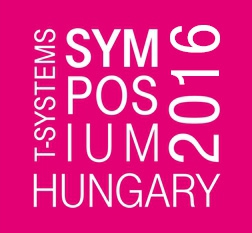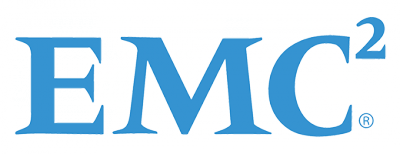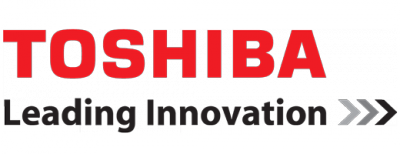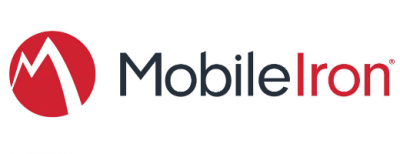SESSIONS AT SYMPOSIUM 2014
In the afternoon of the Symposium, T-Systems Hungary, its main clients and the companies of its partnership ecosystem will be waiting you with lectures by specialists in 12 thematic sessions. This year the individual sessions will focus on solutions that determine corporate competitiveness and operational efficiency, but the technological achievements of T-Systems Hungary and its partners will also be presented in relation to the individual megatrends.
Learn more about our sessions!
State and Public Administration Session
Public administration and the individual specialised organisations start ICT development projects with individual requirements and in relation to public duties and functions. The most recent technological opportunities are capable of providing long-term solutions for particular problems despite changes in statutory conditions. Among others, the lecturers of the session will touch upon the modernisation tax administration, but agricultural IT will also be on the agenda.
Interview with line director Péter Apor (Government and Public Administration)
Interview with line director Péter Apor (Government and Public Administration)
Your session covers an extremely diverse area. Which topics would you like to highlight from among those discussed during the thematic session at this year’s Symposium?
In addition to the IT background provided for agriculture and for the related specialised administrative areas, the most intensive segments include taxation.
What technological trends do you experience in the latter field and what is the direction of progress in your opinion?
In rural development (including environmental protection, nature conservation, agriculture, land management and food chain security, etc.), as a result of the policy pursued in the past few years, a kind of centralisation, that is, increasing control by central public administration units can be seen simultaneously with efforts on decentralisation, i.e. a shift of focus to rural areas, smallholders and farmers. In the period ahead of us, we can expect focussed central public administration, the strengthening of the institutional background (KÁ, MVH, NéBIH, FöMI, etc.) and, through their activity, massive development in the countryside and in agriculture. The funds allocated to the sector from major Hungarian sources and from European Union subsidies are expected to increase and consequently transform the rural image. Accordingly, in addition to supporting the usual public administration duties and trend-like activity, the ICT service provider must also pay attention to the changing market and its rising new participants. To put it in a different way, in addition to large corporate customers, small and medium-sized businesses will have an increasing significance. Taking this into account, the communication, infrastructure and service portfolios need to be diversified.
For which solutions and services has agricultural demand increased?
In order to answer this question, first allow me a little retrospection: although in the past few years the basic ICT infrastructure was set up, it is not homogeneous either in a sectoral perspective or in the far wider view of public administration. The primary focus fell on the electronisation of direct operation (thus for example, electronic filing, electronic case management, the development of digital registers, and the questions of data sharing and access to data). Moreover, the existing infrastructure is frequently too costly and can only be maintained at high fixed costs.
In order to improve financial efficiency in the sector, the role of IT and telecommunication must be increased with a view to cost optimisation, by a drastic increase in the analytic capabilities and through the complex interconnection of the various systems.
This can be expected to result in the spread of cloud-based services, first in the infrastructure (processing ability, data storage, connection) and then in the basic services (correspondence, document and case management, customer relationship systems, CC&CRM).
Currently, the bases of data cross-checking and information flow between the systems are present only in an isolated manner, but the role and spread of data exchange solutions (Middleware/ESB) and the solutions that harmonise master data management will necessarily increase.
Modern economy management cannot afford to dispense with the introduction of systems that support complex and comparative analyses as well as those that prepare decisions. As a result, the data warehouses, Big Data capabilities, GIS tools and systems capable of making smart reports are the foundation stones of the future agricultural public administration, which may become an inseparable constituent of the sectoral, and after a similar development has been made in the other special fields, also the Governmental Information Hub.
What kinds of technological trends can you see in tax administration, where similar public administration duties are performed?
Fundamentally, I can see a continued fast increase in the volume of the data waiting for processing and evaluation. Perhaps the best example to mention is the amount of data in the online cash register systems. Another important trend concerns data freshness – in the case of online cash registers, practically even the data warehouse part has real-time data. The appearance of these trends was greatly promoted by the fact that the technology supporting the processing of large-volume real-time data is not only available but also affordable in terms of both hardware and software.
Naturally, in order to be able to use the value of the information content of these data in their daily activity, tax professionals increasingly demand the use of analytical software tools (BI reporting and data mining).
How can one get prepared for receiving trend-like changes in taxation?
The most important change is that we consciously utilise the information volume given in the data, as currently IT is not expected to show what happened and what the current situation is, but to set up hypotheses and trends for the potential future, and to identify hidden patterns and regularities.
In order to meet these expectations, changes are required not only in technology but also in the approach to IT, with flexibility appreciated and in addition to the waterfall model, the role of agility becomes unquestionable. We must clear up how to interpret agility in the case of a particular organisation, and on this basis we must organise the implementation of projects for setting up the mentioned hypotheses and for revealing the trends and concealed regularities. In relation to the management of the ever increasing data volumes, it remains a serious question according to what (tax) professional requirements can the Big Data concept be utilised in the future.
In addition to the IT background provided for agriculture and for the related specialised administrative areas, the most intensive segments include taxation.
What technological trends do you experience in the latter field and what is the direction of progress in your opinion?
In rural development (including environmental protection, nature conservation, agriculture, land management and food chain security, etc.), as a result of the policy pursued in the past few years, a kind of centralisation, that is, increasing control by central public administration units can be seen simultaneously with efforts on decentralisation, i.e. a shift of focus to rural areas, smallholders and farmers. In the period ahead of us, we can expect focussed central public administration, the strengthening of the institutional background (KÁ, MVH, NéBIH, FöMI, etc.) and, through their activity, massive development in the countryside and in agriculture. The funds allocated to the sector from major Hungarian sources and from European Union subsidies are expected to increase and consequently transform the rural image. Accordingly, in addition to supporting the usual public administration duties and trend-like activity, the ICT service provider must also pay attention to the changing market and its rising new participants. To put it in a different way, in addition to large corporate customers, small and medium-sized businesses will have an increasing significance. Taking this into account, the communication, infrastructure and service portfolios need to be diversified.
For which solutions and services has agricultural demand increased?
In order to answer this question, first allow me a little retrospection: although in the past few years the basic ICT infrastructure was set up, it is not homogeneous either in a sectoral perspective or in the far wider view of public administration. The primary focus fell on the electronisation of direct operation (thus for example, electronic filing, electronic case management, the development of digital registers, and the questions of data sharing and access to data). Moreover, the existing infrastructure is frequently too costly and can only be maintained at high fixed costs.
In order to improve financial efficiency in the sector, the role of IT and telecommunication must be increased with a view to cost optimisation, by a drastic increase in the analytic capabilities and through the complex interconnection of the various systems.
This can be expected to result in the spread of cloud-based services, first in the infrastructure (processing ability, data storage, connection) and then in the basic services (correspondence, document and case management, customer relationship systems, CC&CRM).
Currently, the bases of data cross-checking and information flow between the systems are present only in an isolated manner, but the role and spread of data exchange solutions (Middleware/ESB) and the solutions that harmonise master data management will necessarily increase.
Modern economy management cannot afford to dispense with the introduction of systems that support complex and comparative analyses as well as those that prepare decisions. As a result, the data warehouses, Big Data capabilities, GIS tools and systems capable of making smart reports are the foundation stones of the future agricultural public administration, which may become an inseparable constituent of the sectoral, and after a similar development has been made in the other special fields, also the Governmental Information Hub.
What kinds of technological trends can you see in tax administration, where similar public administration duties are performed?
Fundamentally, I can see a continued fast increase in the volume of the data waiting for processing and evaluation. Perhaps the best example to mention is the amount of data in the online cash register systems. Another important trend concerns data freshness – in the case of online cash registers, practically even the data warehouse part has real-time data. The appearance of these trends was greatly promoted by the fact that the technology supporting the processing of large-volume real-time data is not only available but also affordable in terms of both hardware and software.
Naturally, in order to be able to use the value of the information content of these data in their daily activity, tax professionals increasingly demand the use of analytical software tools (BI reporting and data mining).
How can one get prepared for receiving trend-like changes in taxation?
The most important change is that we consciously utilise the information volume given in the data, as currently IT is not expected to show what happened and what the current situation is, but to set up hypotheses and trends for the potential future, and to identify hidden patterns and regularities.
In order to meet these expectations, changes are required not only in technology but also in the approach to IT, with flexibility appreciated and in addition to the waterfall model, the role of agility becomes unquestionable. We must clear up how to interpret agility in the case of a particular organisation, and on this basis we must organise the implementation of projects for setting up the mentioned hypotheses and for revealing the trends and concealed regularities. In relation to the management of the ever increasing data volumes, it remains a serious question according to what (tax) professional requirements can the Big Data concept be utilised in the future.
Back
Sympo2014logo

Event Partners
Diamond level partner

Emphasized technological partner

Gold level partners








Emphasized international partner

Silver level partners




Professional partner
Professional partner

Collaborator partners
Collaborator partners


Strategic media partners
Media partners








